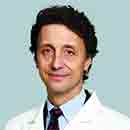The Ultimate Guide to Dental Cleaning: Everything You Need to Know
Published in Health Articles
You might be surprised to learn that brushing alone only cleans two-thirds of your teeth. That’s where professional dental cleaning comes into play.
In this comprehensive guide, we will explore everything you need to know about dental cleaning, from the techniques used to the benefits it offers.
Let’s begin!
Know the Types of Dental Cleaning
The most common type is routine dental cleaning, a prophylaxis. This involves removing plaque and tartar build-up from the surface of the teeth and polishing them for a clean and smooth finish.
For those with more severe gum disease or periodontitis, a deep cleaning may be recommended. This involves scaling and root planing to remove plaque and bacteria below the gum line. This promotes healthier gums and prevents further damage.
Another type of teeth cleaning is an air abrasion cleaning. It uses a fine powder sprayed onto the teeth to remove stains without scraping or polishing. This method is often used for those with sensitive teeth or dental work.
Know the Importance of Regular Dental Cleanings
Regular dental cleanings are crucial for maintaining both oral and overall health. They help prevent cavities by removing plaque, a sticky film of bacteria that can lead to tooth decay if not properly managed.
Cleanings also reduce the risk of gum disease by eliminating tartar build-up that can irritate gums and cause infection. Moreover, professional cleanings can aid in the early detection of oral health issues, such as oral cancer. This is achieved by allowing dentists to identify signs that might not be visible during regular self-assessments.
Ideally, dental cleanings should be done every six months so you need to understand why you should schedule regular dental checkups. But, for those with a higher risk of oral health issues, more frequent visits may be necessary.
Overall, these cleanings are an essential component of a comprehensive oral care routine. Thus, supporting long-term dental health and well-being.
Enhance Your Dental Cleaning Routine
To make the most out of your dental cleanings, it’s crucial to establish a good at-home oral hygiene routine. This includes brushing twice a day with fluoride toothpaste and flossing daily. These can help remove plaque and food particles from between teeth.
Moreover, consider incorporating mouthwash into your routine, as it can help reduce plaque and bacteria in hard-to-reach areas of the mouth. It’s also important to visit your dentist regularly for check-ups and cleanings every six months or as recommended by your oral health professional.
Get the Most out of Your Dental Cleaning Experience
In addition to maintaining good oral hygiene, there are a few things you can do to ensure an optimal dental cleaning experience.
Firstly, communicate with your dentist or hygienist about any concerns or issues. They can provide tips and advice specific to your needs and make necessary adjustments during the cleaning process.
Secondly, relax and breathe deeply during the procedure. This will help ease any discomfort and allow for a thorough cleaning.
Lastly, don’t be afraid to ask questions. Your dentist or hygienist is there to educate and inform you about your oral health. Understanding the process can help alleviate any anxiety or uncertainty you may have.
Dental Cleaning is Important
Dental cleaning plays a crucial role in maintaining good oral health. With different types available and numerous benefits, it is important to prioritize regular cleanings in your dental care routine.
So, make sure your toothbrush is doing enough by incorporating professional dental cleaning into your routine!
Should you wish to explore other topics, head to our blog page. We’ve got more!























Comments